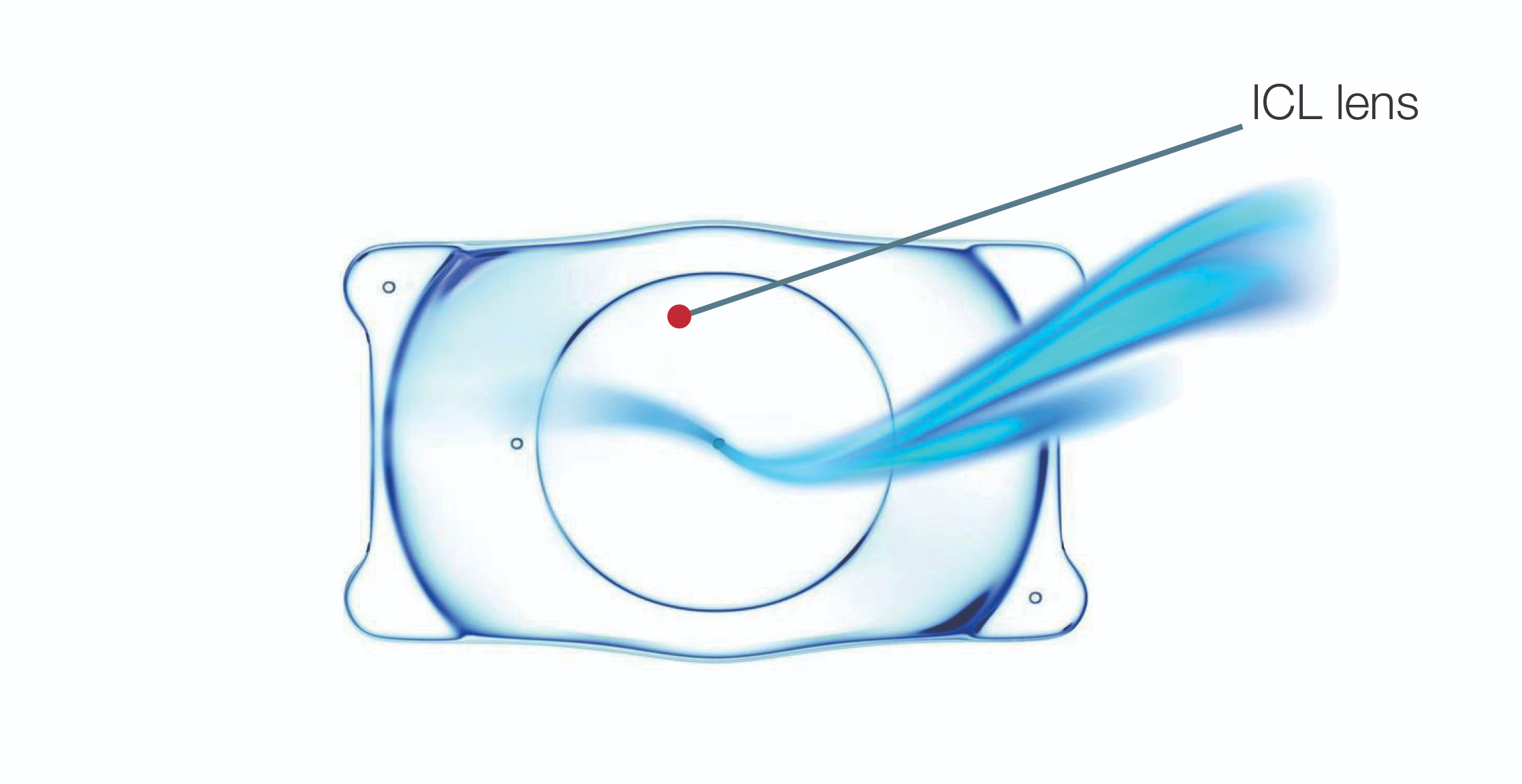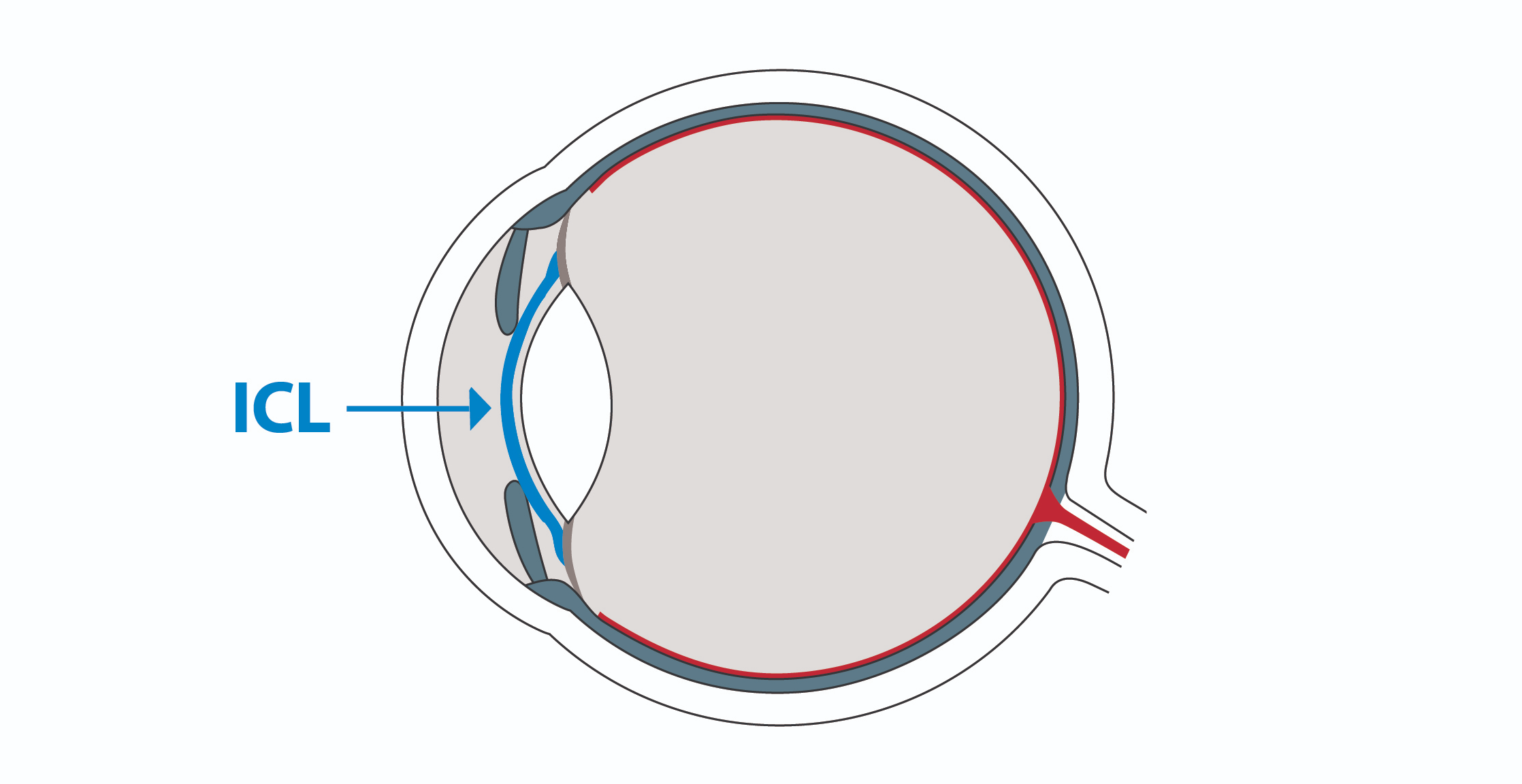What Are Implantable Contact Lenses?
People with extreme nearsightedness, farsightedness, astigmatism or a thin cornea are typically not suitable for a laser eye treatment. Surrender to fate and accept glasses? Not with EuroEyes!
With the ICL, a phakic intraocular lens, EuroEyes can offer an excellent alternative treatment for nearsighted patients with a dioptre higher than -8, and for farsighted patients with a dioptre higher than +3 – even if the refractive error is combined with astigmatism. Contrary to a contact lens, the ICL will remain permanently in the eye, but can be replaced at any time. It is positioned between the iris and the natural lens. Working in harmony with your natural lens, the ICL thereby ensures that the light is correctly focused on the retina, making it possible for the patient to see clearly once again. This procedure has been carried out for more than 25 years and is considered an extremely safe method for the treatment of myopia, farsightedness and astigmatism.
And you can have confidence that EuroEyes has implanted the most ICL contact lenses in Europe for the fourth time in a row.










